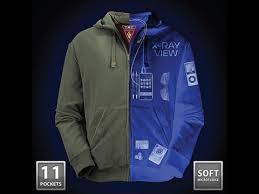Smart Clothing

Clothing is no more a draped material over human body for protecting it from weather condition
Clothing is no more a draped material over human body for protecting it from weather conditions. It has many more functions: a status symbol, beautifying agent, personality developer and in an era of smart clothing, it can also be a fitness guide, caretaker and a multitasking device. Smart clothing is different from basic clothing in terms of the functions performed. Its functions include sensing and monitoring of human body metabolism, including moisture, temperature and respiratory rhythm patterns, habits, behaviours, and maintenance of emotional and physical wellness. If a piece of garment prepared from an intelligent textile can serve these, it is crucial to understand its working, functions, need, market share and future demand.
Why chose 'smart' or 'functional' clothes?
Clothing is the only medium that can always or in all the conditions stick to human body. Second, being next to the skin, it can easily become a material to sense body movement. Third, a fabric is flexible in nature and can be moulded into a desired shape. Another aspect of clothing is that it can act as a work aid for electronic media. Composites of fibres, yarn or fabric with metal can also impart comfort to the human body. It can easily become a medium for man-machine interaction.
Need for fusion
People now are generally seen carrying electronic gadgets like mobiles phones, advanced wrist watches, headphones, ipods and laptops, which have become essentials. The sale of such gadgets is witnessing an upward curve and their market volume is likely to see a surge. If people are indeed going to carry these gadgets for most of the time in a day, then merging these two fields can prove fruitful.
Merging two disciplines
One category of smart textiles is called 'e-textiles', which are a combination of textile and electronics. Modified textile material and miniaturised electronic devices create smart clothing. These are like ordinary cloth providing special functions in various situations, according to the design and application. Electronic gadgets like chips, microphones, LEDs and low voltage wires can be merged with textiles.
The evolution of smart clothing can be loosely summarised thus. The first-generation smart clothing provided space in clothes needed to carry portable devices conveniently as well as wire-guides (or path) for earphones. The next generation integrated electronic devices into clothing. For example, fibre-based electric wires that use metal fibre are inserted into the clothes and tiny electronic devices are attached to the clothes. Smart clothing is a new type of apparel created by fusing electronic engineering and apparel design. The process of mergence offers electronic functionality and textile characteristics. To get the perfect combination, materials like carbon, silicon, metal particles and conductive inks are used. The basic raw materials are:
-
Carbon/metal particles
-
Filling synthetic yarns
-
Fibres coated with conductive polymers
It can be fabricated into a woven, or knitted or embroidered into fabrics. These raw materials generally contain some specific functionality/characteristics that allow them to perform a particular function as per usage.
Special characteristics of smart materials
-
Phase change materials: Enhancing comfort through temperature control by changing its phase.
-
Shape memory materials: Induce mechanical vibrations in clothing, use of shape memory alloy (SMA) and shape memory polymer (SMP) properties.
-
Chromic materials: These have chameleon-like fibres, which can change colours according to external conditions, offering photoluminescence (preferred for party wear) and optical luminescence.
-
Electronic & conductive textiles: The textile material itself can conduct electricity either in fibre or yarn form or by using coatings on fabric. Polyaniline and polypropylene are conductive polymers. Bekinox stainless steel multi-filament yarns and X-silver are examples.









